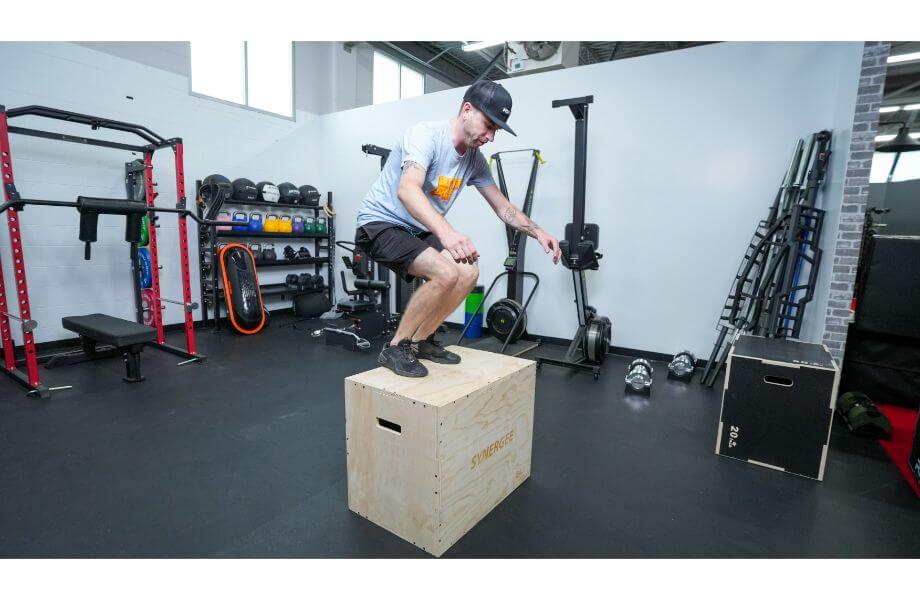We test and review fitness products based on an independent, multi-point methodology. If you use our links to purchase something, we may earn a commission. Read our disclosures.
Have you ever heard someone say that they are “deconditioned”? In the personal training world, we refer to people as being deconditioned when they are simply (and bluntly) out of shape. Maybe it means that walking up a flight of stairs is difficult. Even experienced athletes can be deconditioned, when they can’t, say, run a mile or do high-intensity workouts like they used to.
Conditioning workouts are one way to solve that. These types of workouts are designed to increase your heart rate, challenge your metabolic pathways, and build stamina for better athletic performance. A conditioning workout routine could combine cardio and full-body dumbbell exercises. It could also be strictly aerobic (with oxygen) or anaerobic (without oxygen) in terms of pulling from an energy source during exercise1.
Being better conditioned2 may help you recover faster between strength training sessions, reduce your risk of cardiovascular disease, and burn more calories. Here we’ll get into the best conditioning workouts, their benefits, and why it should become a part of your regular training regimen.
Medical disclaimer: This article is intended for educational and informational purposes only. It is not intended as a substitute for medical advice. For health advice, contact a licensed healthcare provider.
The Best Conditioning Workouts
The best conditioning workouts should not be complicated, just effective. Here are eight of the best conditioning exercises that you should consider doing. Sorry, yes, burpees are included (you’ll thank us one day).
Note: Most of these exercises are bodyweight focused, but you can use a dumbbell or a barbell to increase the intensity as needed.
Burpees
Why it’s great: Burpees are fun! Well, for many people, burpees are not fun. But they are a full-body workout that burns a ton of calories and improves your ability to get up and down from the ground.
How to do it:
- Stand with your feet hip-width apart and your arms by your sides.
- Squat and place both hands on the ground.
- Hop your feet back until you’re in the push-up plank position, and squeeze your glutes to get your spine neutral.
- Bend your elbows to drop down, touching your body to the floor.
- Exhale and perform a push-up.
- Hop your feet forward back to your hands, lift your body off the floor, and jump up, extending your arms overhead.
- Return to the starting position, reset, and repeat for desired repetitions.
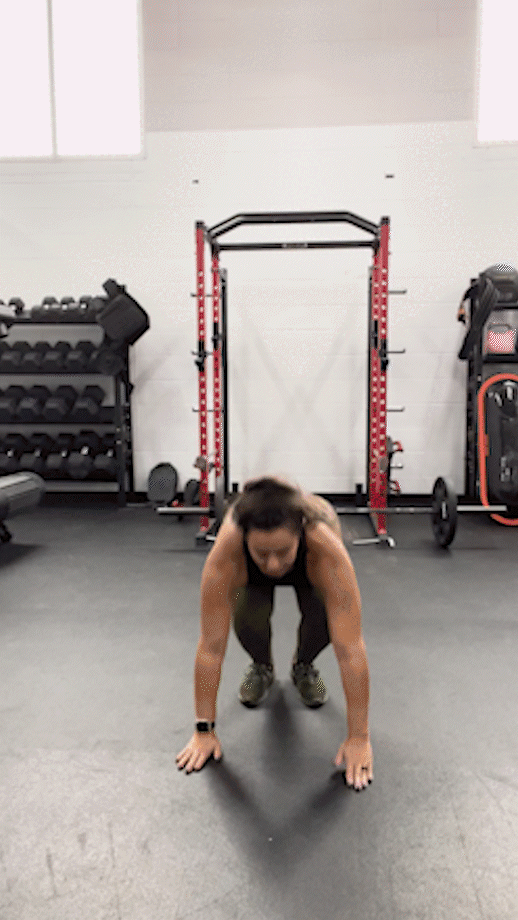
Walking Lunges
Why it’s great: The walking lunge exercise requires balance and coordination while working on your heart, lungs, quads, and glutes.
How to do it:
- Stand with your feet together, around hip-width apart.
- Take a forward step with your right foot around 18 to 24 inches in front of you.
- Then allow your right knee to track forward over your right foot.
- Then push your right foot through the floor while moving forward and bring your left foot to meet your right foot.
- Step forward with the left leg and reset and repeat for desired reps.
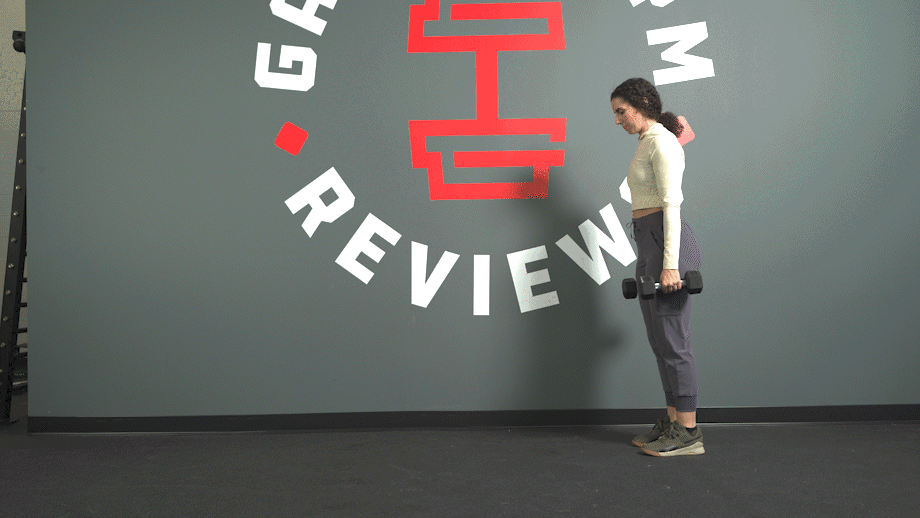
Jumping Jacks
Why it’s great: Jumping jacks are a simple full-body exercise easily repeated for repetitions while working the glutes in the frontal (lateral) plane.
How to do it:
- Stand with your feet hip-width apart and arms by your side.
- Jump out laterally with both feet landing on your toes while raising both arms above your head.
- Jump back to the starting positions and repeat continuously for reps.
RELATED: Kettlebell Workouts For Glutes
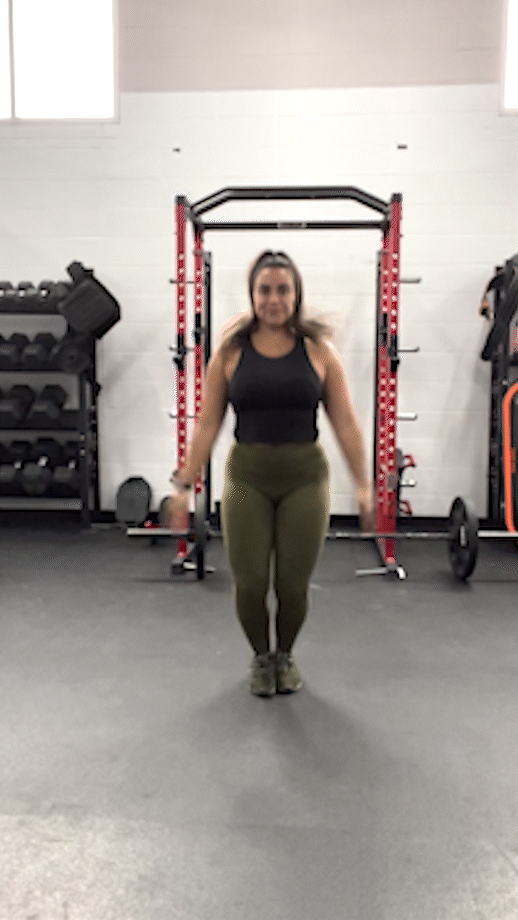
Kettlebell Swings
Why it’s great: Kettlebell swings are a full-body exercise that builds glute and hamstring power while being a low-impact and high-intensity exercise that helps improve conditioning and deadlift form.
How to do it:
- Stand with your feet wider than shoulder-width apart, holding a kettlebell in front of you using a pronated grip..
- Slightly bend your knees and lean forward while maintaining a straight back.
- Swing the kettlebell up to chest height by thrusting your hips forward. Finish by squeezing your glutes and quads.
- Using momentum, let the kettlebell swing back to starting position with knees bent.
- Then thrust your hips forward, using this momentum to swing the kettlebell to chest height.
- Repeat for reps.
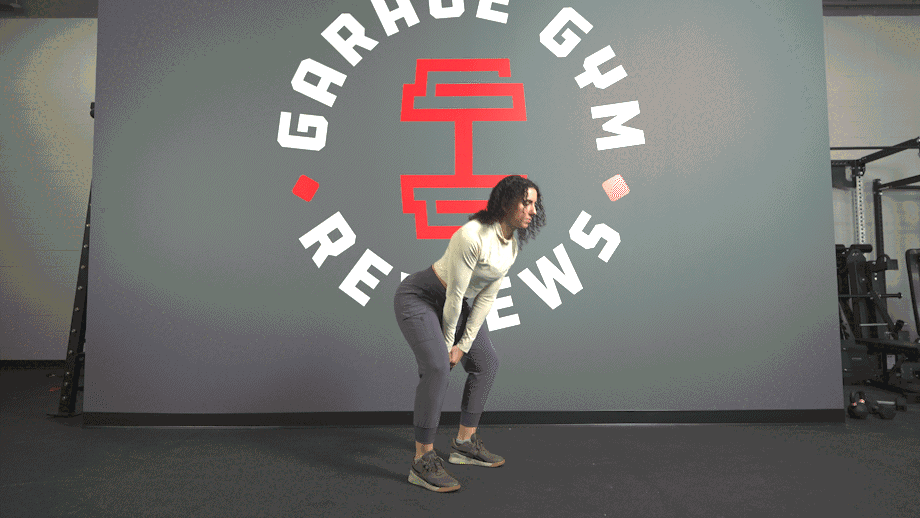
Mountain Climbers
Why it’s great: Mountain Climbers are one of the best ab exercises. They can help improve your core strength and conditioning while being a low-impact, high-intensity exercise that’s easy on the joints.
How to do it:
- Begin in a strong push-up plank position with your feet hip-width apart.
- Pull your right knee towards your chest quickly and return to the starting position.
- Then repeat with the left leg.
- Quickly alternate legs, driving the knees toward the chest like you’re running.
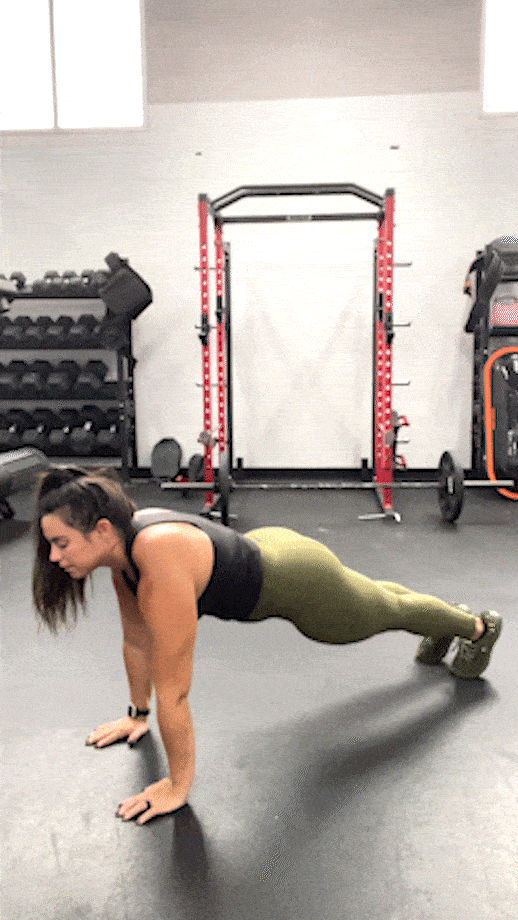
Squat Jumps
Why it’s great: Squat jumps can help improve your leg power and strength, boost vertical jumps, and have great carryover for improving your weighted squats.
How to do it:
- Stand in your preferred squat stance with arms by your side.
- Perform a squat while pulling your arms back.
- Then explode, throw your arms in the air, and jump as high as possible.
- Land softly on both feet and stick the landing.
- Lower into a squat and repeat for desired repetitions.
RELATED: What Muscles Do Squats Work?
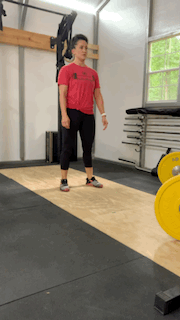
Box Jumps
Why it’s great: Box jumps help improve lower body strength and conditioning while improving your vertical jump to outleap your opponents.
How to do it:
- Load your hips by performing a quarter squat or hinge in front of your box.
- Thrust your arms forward and back as you explode off the ground traveling up and toward the top of the box.
- Land with both feet simultaneously, securely and quietly on the box.
- Step lightly off the box and return to the starting position and repeat.
RELATED: The Best Plyo Boxes
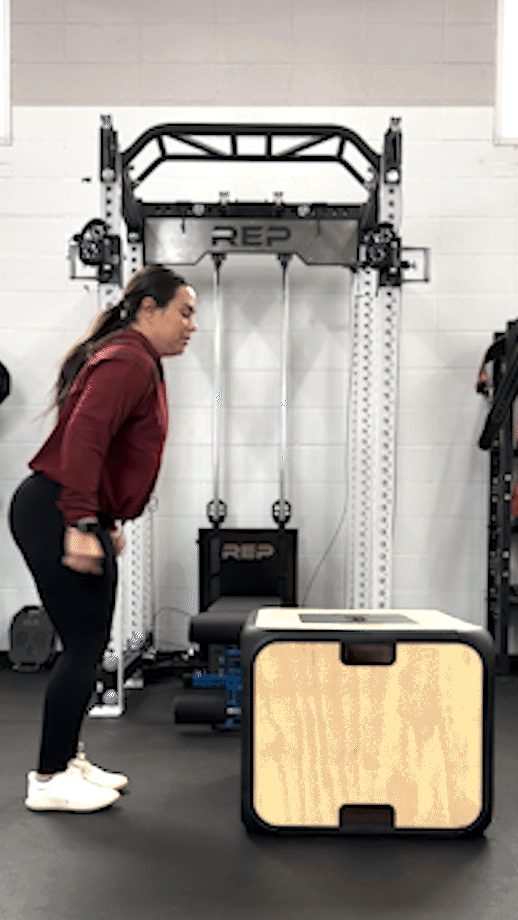
Bodyweight Turkish Get-Up
Why it’s great: Turkish Get-Ups are more fun than burpees, but that’s not a very high bar. Turkish Get-Ups can help improve your core and shoulder strength, hip mobility, and conditioning while providing the stamina needed to quickly get up and down from a prone position.
How to do it:
- Lying flat on the ground, place your right foot on the floor by bending your right knee.
- Slide and extend your left leg out at 45 degrees, and do the same with your left arm with your left palm on the ground.
- Raise your right arm above the shoulder.
- Then push your right shoulder into the ground and roll your upper body to the left side, raising your right hip and pushing your left elbow into the ground to get up.
- Extend your left elbow, sweep the left leg underneath you, and take your left hand off the ground.
- From the half-kneeling position, push your right foot through the floor to stand up.
- Perform the reverse to return to the starting position and repeat on the other side.
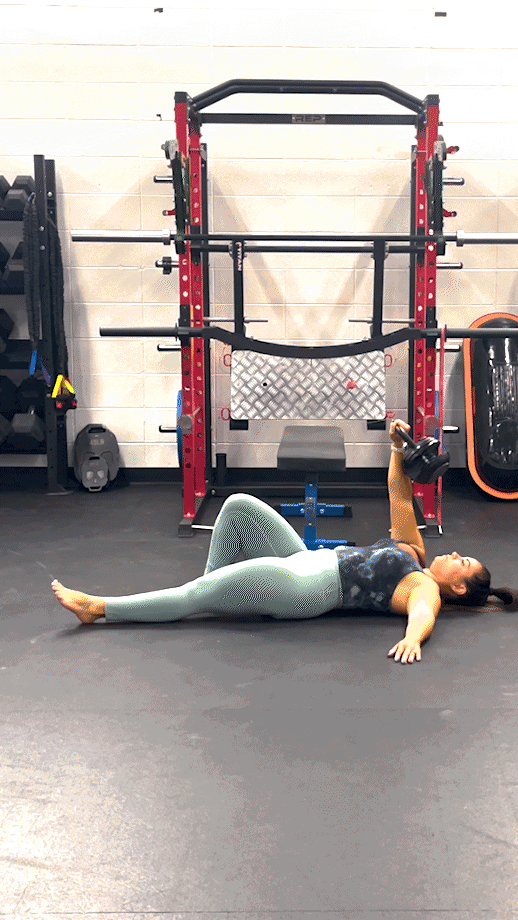
Benefits of Conditioning Workouts
Besides increased stamina, fat burning, and looking and feeling awesome, here are five benefits of regular conditioning workouts.
1. Improved Cardiovascular Health
Regular conditioning exercise helps reduce heart disease risk factors3 like high blood pressure and high cholesterol by lowering LDL (bad cholesterol) and increasing HDL (good cholesterol).
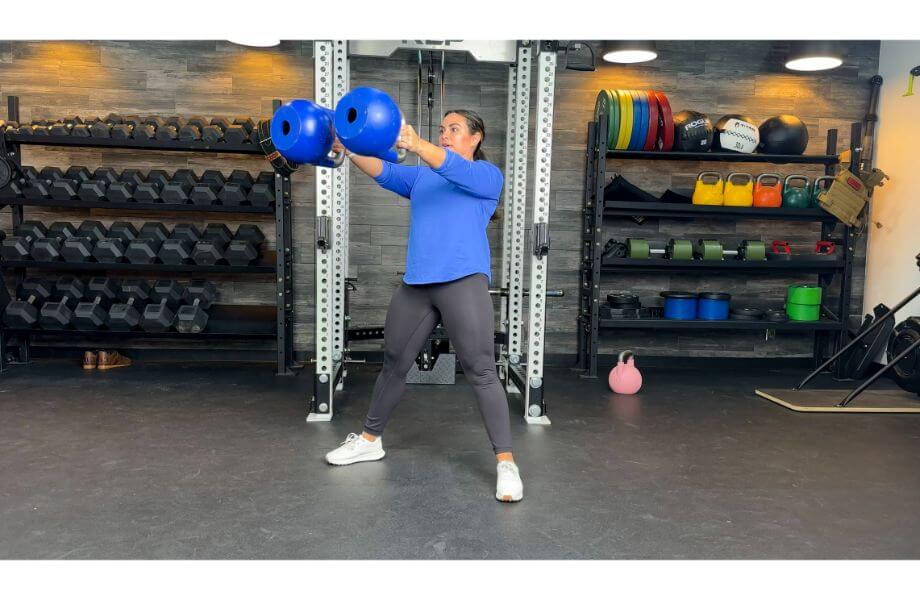
2. More Calories Burned
For every liter of oxygen breathed in, you burn approximately five calories4. When you’re doing these conditioning workouts, you will be breathing in a lot of O2 and burning calories.
3. Improved Work Capacity
Improving the efficiency of your cardiovascular system5 through regular conditioning boosts your aerobic system. A workout routine featuring conditioning exercises can also improve your ability to do more work in the gym or athletic performance on the sporting field.
4. Good for the Mind
Conditioning exercises, like the examples above, not only improve your cardiovascular endurance but have also been shown to help to reduce the effects of anxiety and depression6.
5. Improved Flexibility
Conditioning exercises can take your joints through a full range of motion; you are strengthening and stretching muscles for better strength and flexibility7.
Why You Should Do Conditioning Workouts
Getting stronger is great, but so is improved recovery during your rest periods and your ability to repeat strength training efforts in the gym or sporting field. You can benefit from conditioning workouts no matter what sport you compete in.
Weightlifters
Conditioning keeps an athlete sharp and helps the weightlifter repeat strength efforts. The high-intensity energy nature conditioning puts your muscular power to great use. It challenges your footwork, acceleration, and deceleration, all necessary for competition movements like the snatch and clean and jerk.
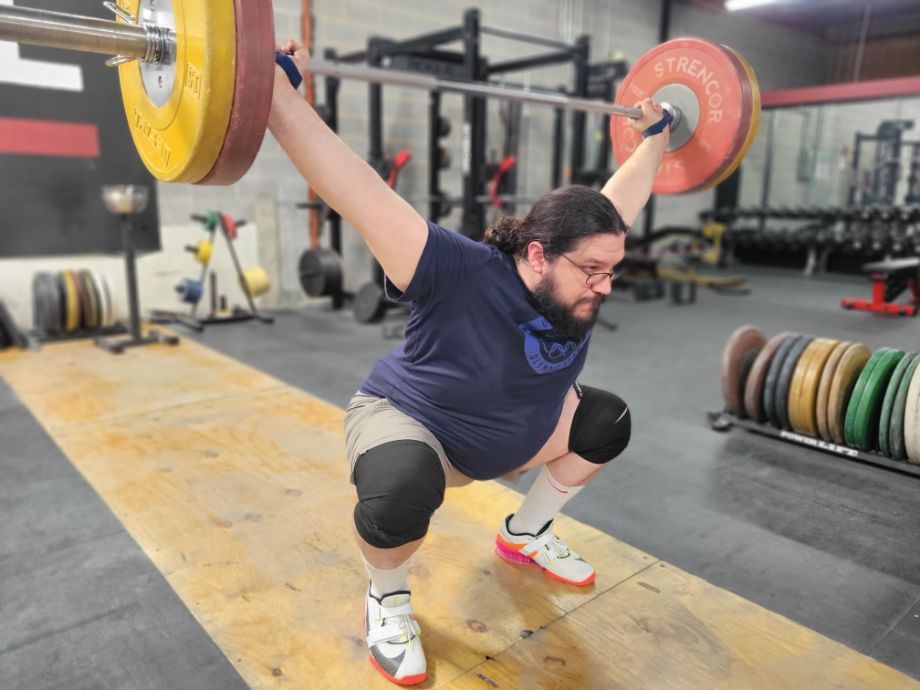
Strongman Competitors
A strongman must breathe while performing heavy pushes, pulls, and carries and recover from repeated strength efforts such as the log press. Improving their cardiovascular system through conditioning exercises can enhance their mental toughness and muscular endurance and may help improve their relative strength.
CrossFitters
CrossFit requires high-intensity repeated exercise under the watchful eye of the clock. CrossFit requires you to be strong and have great muscular endurance for those repeated efforts. Every CrossFitter needs to be better conditioned for improved performance and reduced injury risk.
Weekend Warriors
If you like to compete semi-regularly in pick-up basketball games and the like, then it pays to be better conditioned to compete with your friends on the court and reduce your risk of injury when you feel fatigued.
Conditioning Workouts: Final Thoughts
Although strength training and conditioning are often lumped together, exercisers focus on strength and neglect the conditioning part of the equation, which can be a risky mistake. Having a more efficient cardiovascular system by performing conditioning workouts can lead to the following benefits.
- Better flexibility
- Improved work capacity
- Reduced heart disease risk
- Better fat loss potential
- Improved mood
Now that you know better, you will do better. Get after your conditioning workout routine with a smile!
Conditioning Workouts: Q&A
What is a conditioning workout?
A conditioning workout may use cardio and total-body exercises. It is aimed at improving your aerobic engine and muscular endurance.
What are the three types of conditioning exercises?
The three main types of conditioning exercises are strength/resistance training, aerobic exercise, and flexibility exercise. Doing one type or all three can help improve your work capacity and overall fitness.
What is conditioning vs. cardio?
Conditioning and cardio are the same side of the coin but have one key difference. Conditioning exercises that improve cardiovascular capacity are more of a strength and cardio hybrid than traditional cardio methods.
What is a 5/3/1 conditioning workout?
The 5/3/1 conditioning workout uses a three-week cycle. You’ll lift a heavier weight weekly for fewer reps for your main lifts. In week one, you’ll use sets of five reps; in week two, you’ll lift for three reps; in week three, you’ll use sets of five and three as a warm-up to build strength towards a heavy single or one-rep max (1RM).
RELATED: Best Online Workout Programs Of 2023
References
1. Patel H, Alkhawam H, Madanieh R, Shah N, Kosmas CE, Vittorio TJ. Aerobic vs anaerobic exercise training effects on the cardiovascular system. World J Cardiol. 2017 Feb 26;9(2):134-138. doi: 10.4330/wjc.v9.i2.134. PMID: 28289526; PMCID: PMC5329739.
2. Strength and Conditioning. (2021, November 21). Physiopedia, . Retrieved 18:33, July 14, 2023 from http:///index.php?title=Strength_and_Conditioning&oldid=287192.
3. Mann S, Beedie C, Jimenez A. Differential effects of aerobic exercise, resistance training and combined exercise modalities on cholesterol and the lipid profile: review, synthesis and recommendations. Sports Med. 2014 Feb;44(2):211-21. doi: 10.1007/s40279-013-0110-5. PMID: 24174305; PMCID: PMC3906547.
4. Comana, F. (n.d.) The Value of VO2 – Health Measure or Performance Marker? NASM. Retrieved July 17, 2023 from https://blog.nasm.org/sports-performance/the-value-of-vo2-health-measure-or-performance-marker
5. Pinckard K, Baskin KK, Stanford KI. Effects of Exercise to Improve Cardiovascular Health. Front Cardiovasc Med. 2019 Jun 4;6:69. doi: 10.3389/fcvm.2019.00069. PMID: 31214598; PMCID: PMC6557987.
6. Guszkowska M. Wpływ ćwiczeń fizycznych na poziom leku i depresji oraz stany nastroju [Effects of exercise on anxiety, depression and mood]. Psychiatr Pol. 2004 Jul-Aug;38(4):611-20. Polish. PMID: 15518309.
7. Leite TB, Costa PB, Leite RD, Novaes JS, Fleck SJ, Simão R. Effects of Different Number of Sets of Resistance Training on Flexibility. Int J Exerc Sci. 2017 Sep 1;10(3):354-364. PMID: 28966703; PMCID: PMC5609666.
Further reading

Rowing machine workouts and exercises are a great way to improve your fitness. Here are 4 CPT-vetted workouts to try next time you hop on your erg. Read more

Coop unboxed Rogue’s new stainless steel club and took it for a couple of swings. We’ll break down his first look and initial impressions in our Rogue Mace review. Read more

Walking and jogging backwards on the treadmill is not only safe, but it can be beneficial to your joints, increases muscle strength, and improves coordination. Read more

Are you tired of cranking out crunches and slogging through sit-ups? Stand up, grab a dumbbell, and try out our dumbbell core workout instead! Read more

